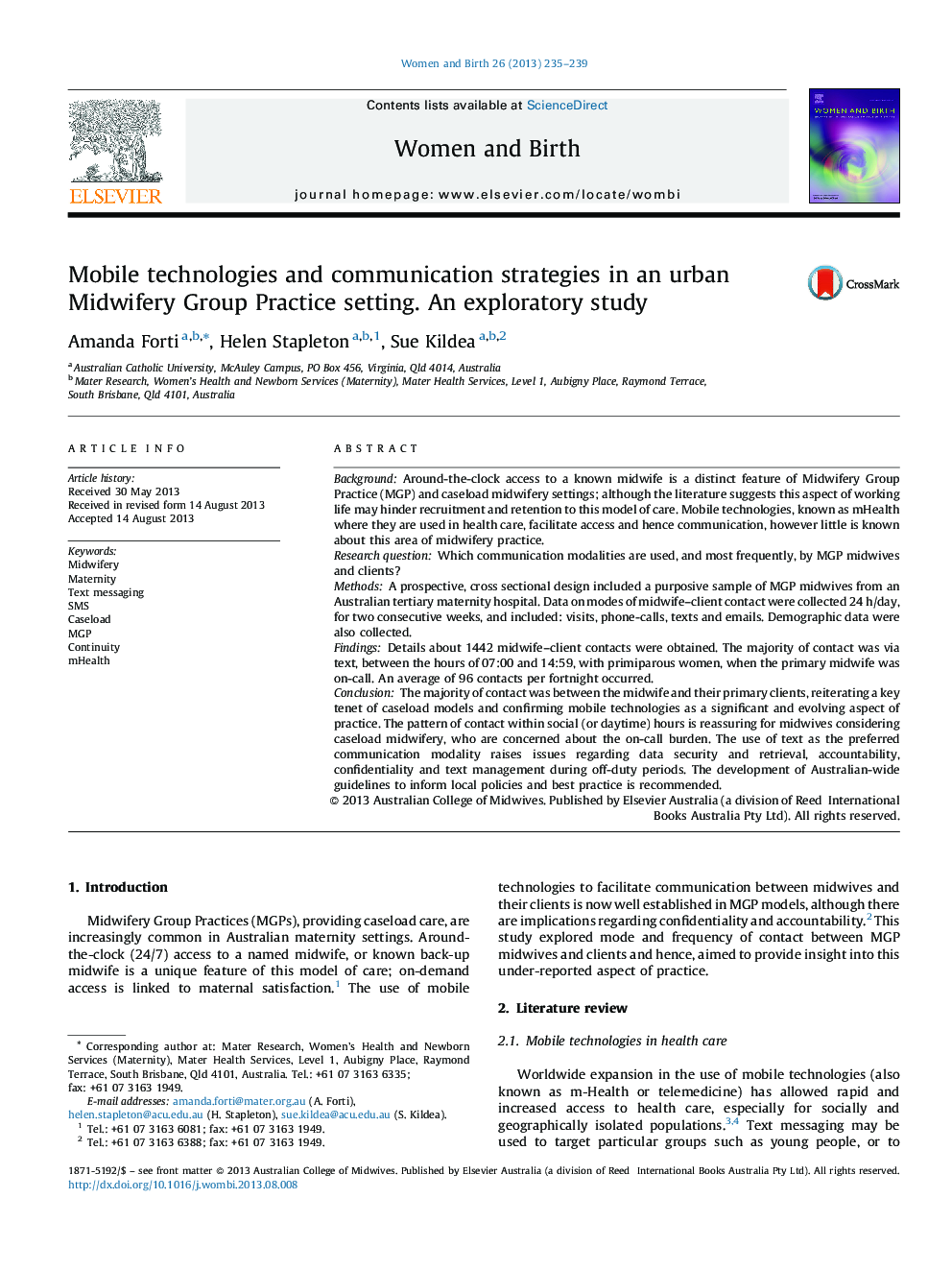| Article ID | Journal | Published Year | Pages | File Type |
|---|---|---|---|---|
| 2636147 | Women and Birth | 2013 | 5 Pages |
BackgroundAround-the-clock access to a known midwife is a distinct feature of Midwifery Group Practice (MGP) and caseload midwifery settings; although the literature suggests this aspect of working life may hinder recruitment and retention to this model of care. Mobile technologies, known as mHealth where they are used in health care, facilitate access and hence communication, however little is known about this area of midwifery practice.Research questionWhich communication modalities are used, and most frequently, by MGP midwives and clients?MethodsA prospective, cross sectional design included a purposive sample of MGP midwives from an Australian tertiary maternity hospital. Data on modes of midwife–client contact were collected 24 h/day, for two consecutive weeks, and included: visits, phone-calls, texts and emails. Demographic data were also collected.FindingsDetails about 1442 midwife–client contacts were obtained. The majority of contact was via text, between the hours of 07:00 and 14:59, with primiparous women, when the primary midwife was on-call. An average of 96 contacts per fortnight occurred.ConclusionThe majority of contact was between the midwife and their primary clients, reiterating a key tenet of caseload models and confirming mobile technologies as a significant and evolving aspect of practice. The pattern of contact within social (or daytime) hours is reassuring for midwives considering caseload midwifery, who are concerned about the on-call burden. The use of text as the preferred communication modality raises issues regarding data security and retrieval, accountability, confidentiality and text management during off-duty periods. The development of Australian-wide guidelines to inform local policies and best practice is recommended.
